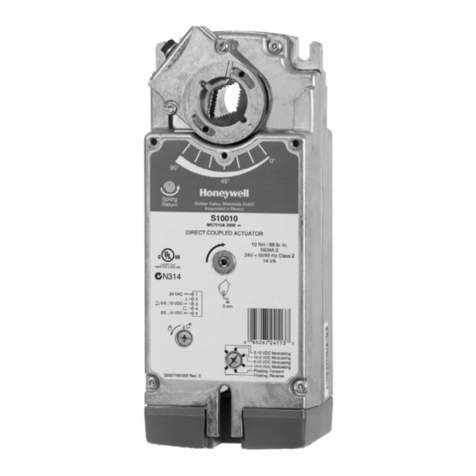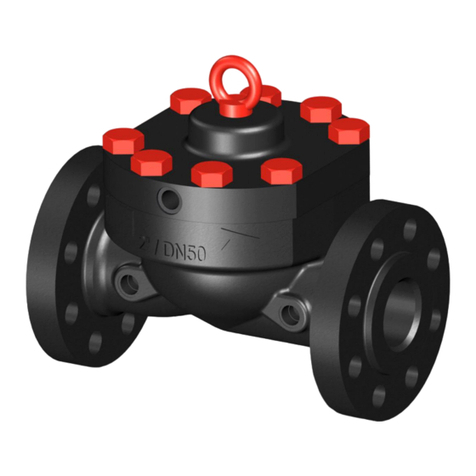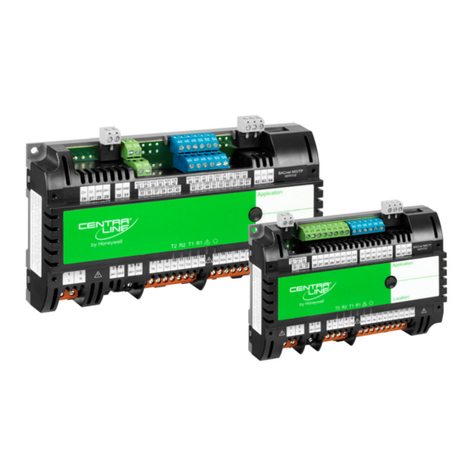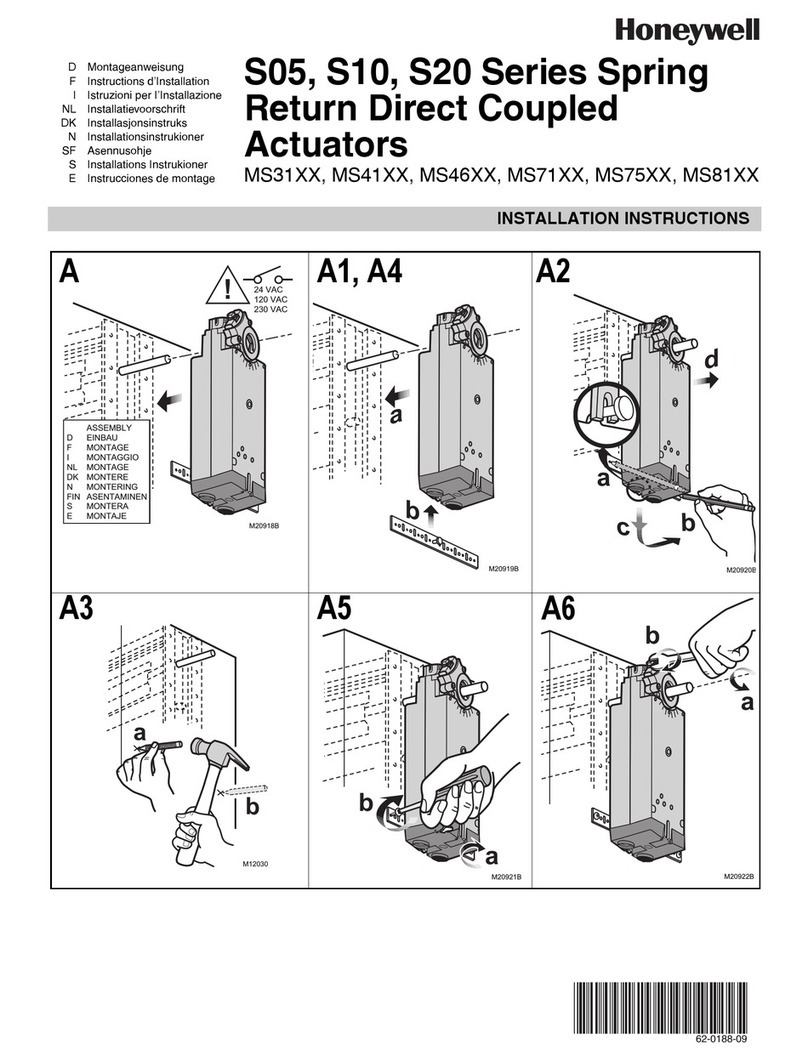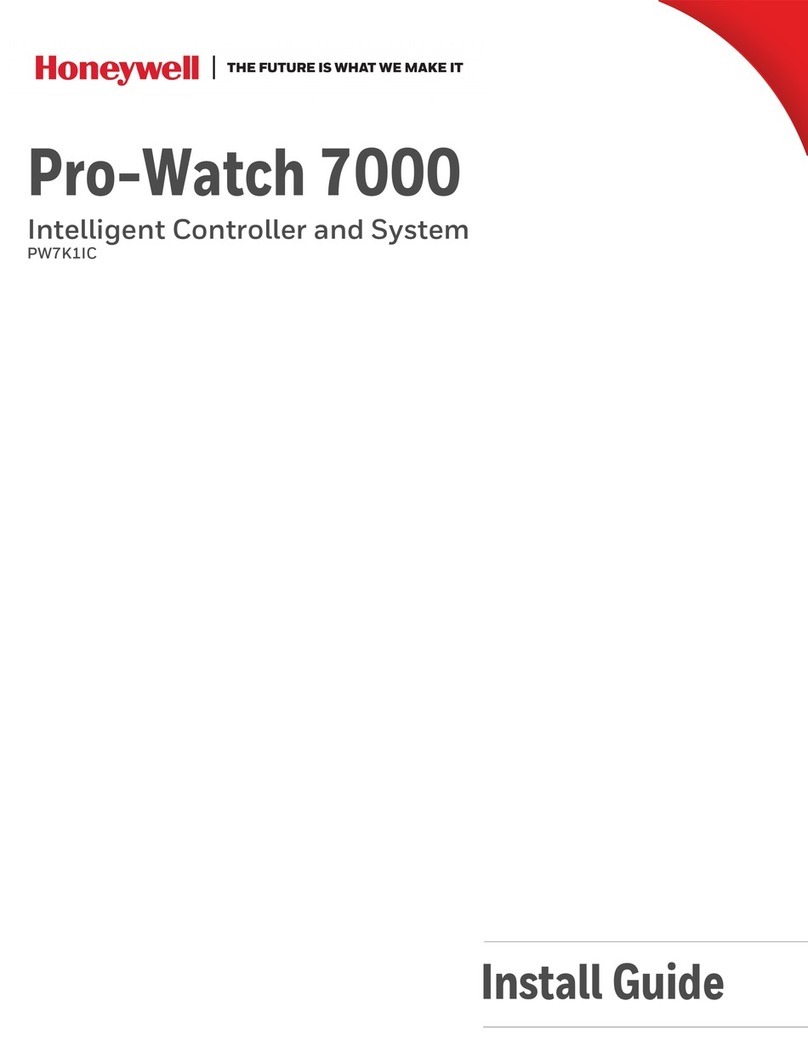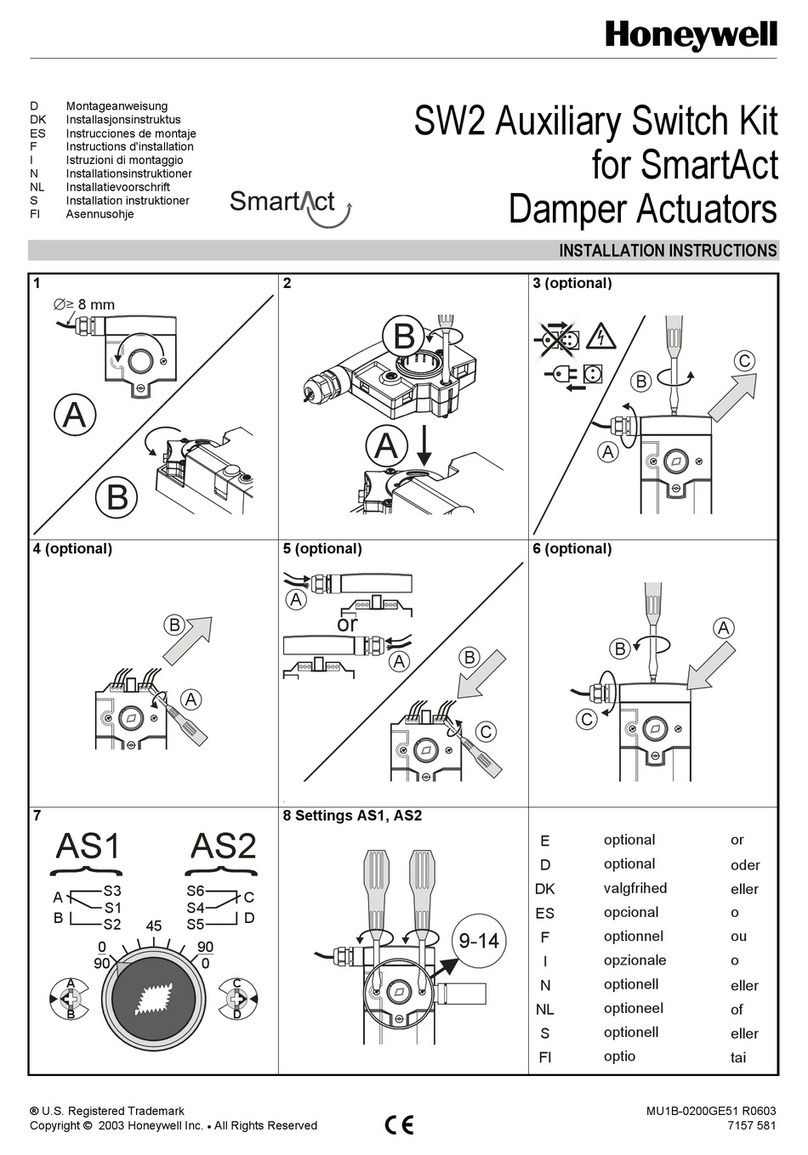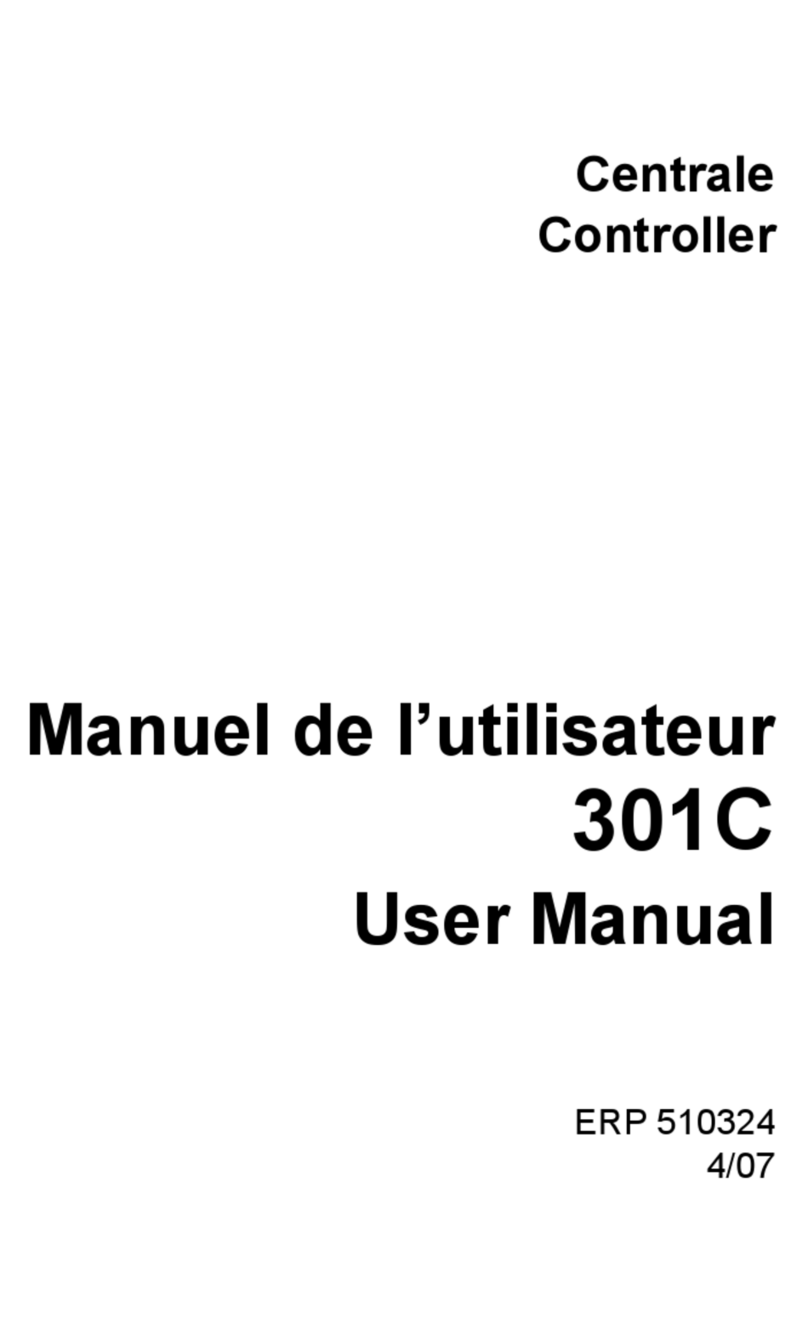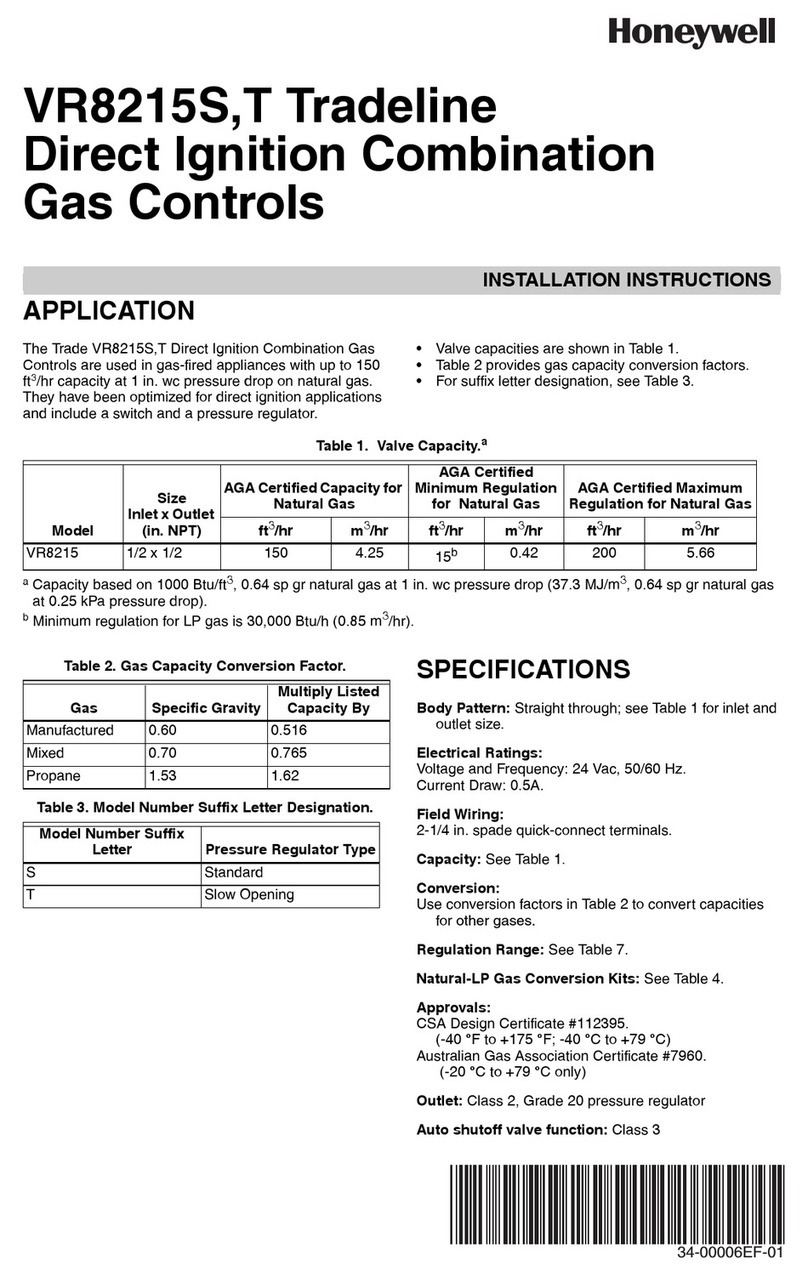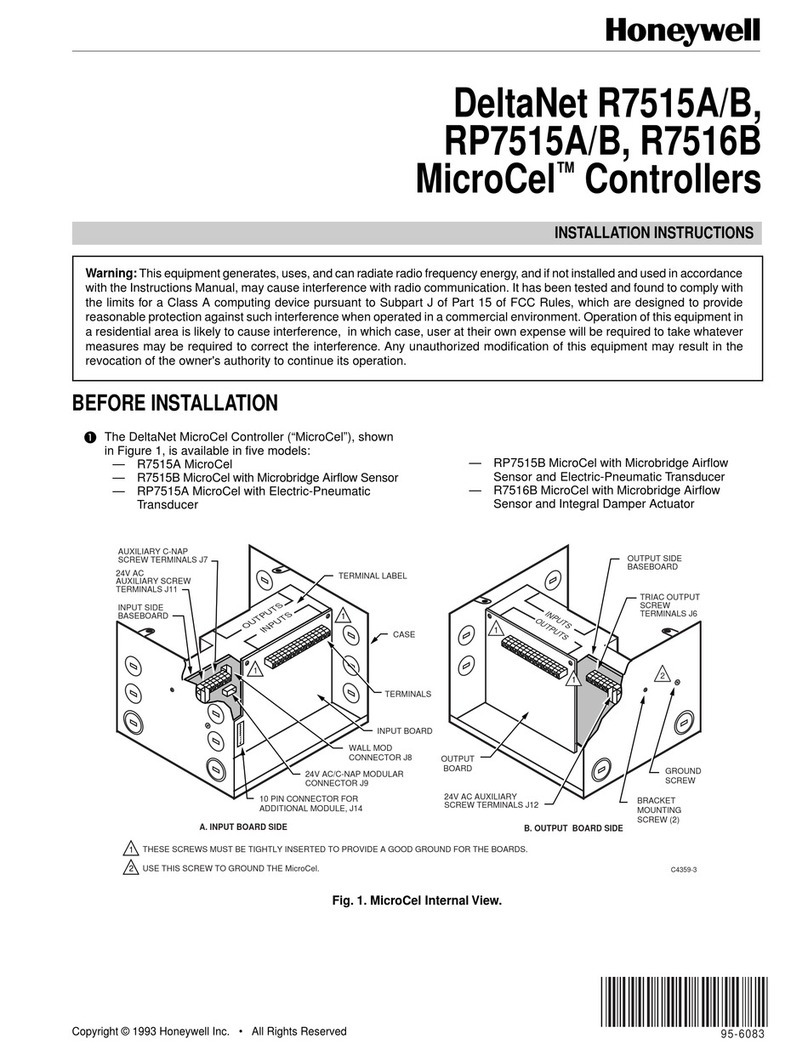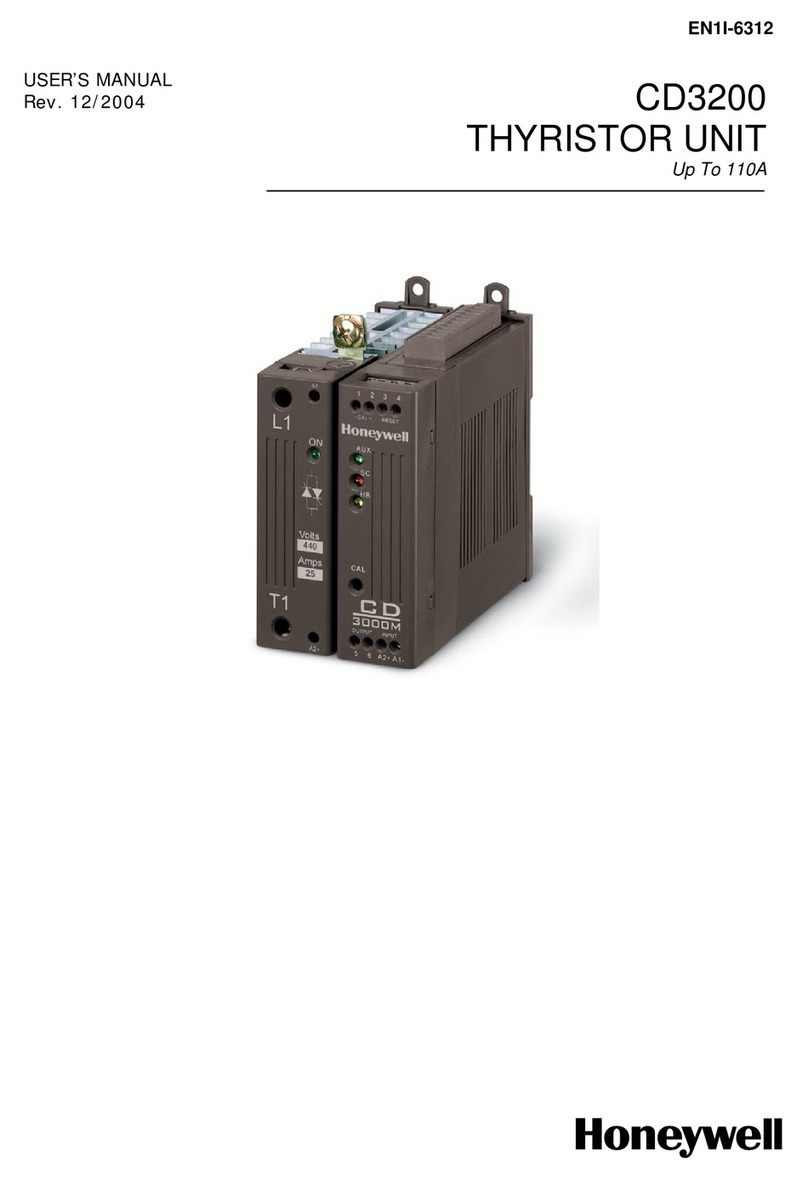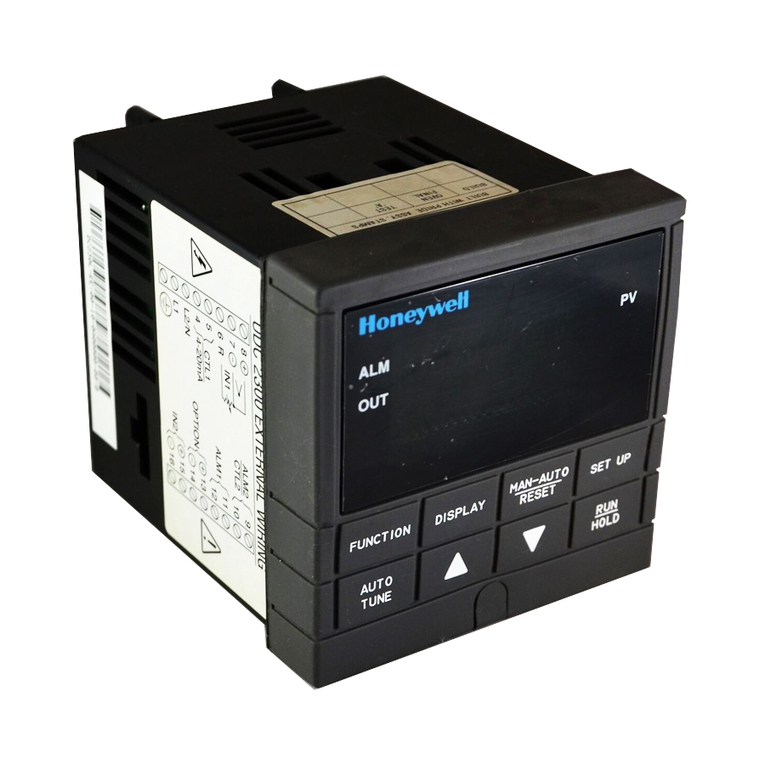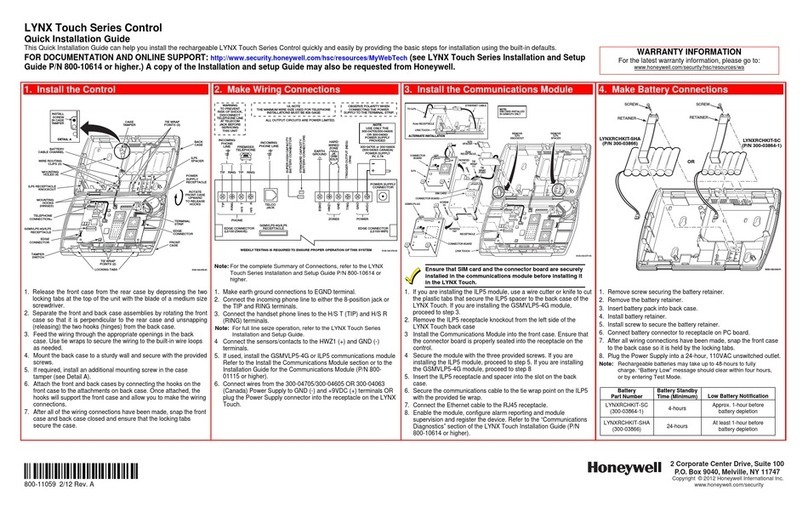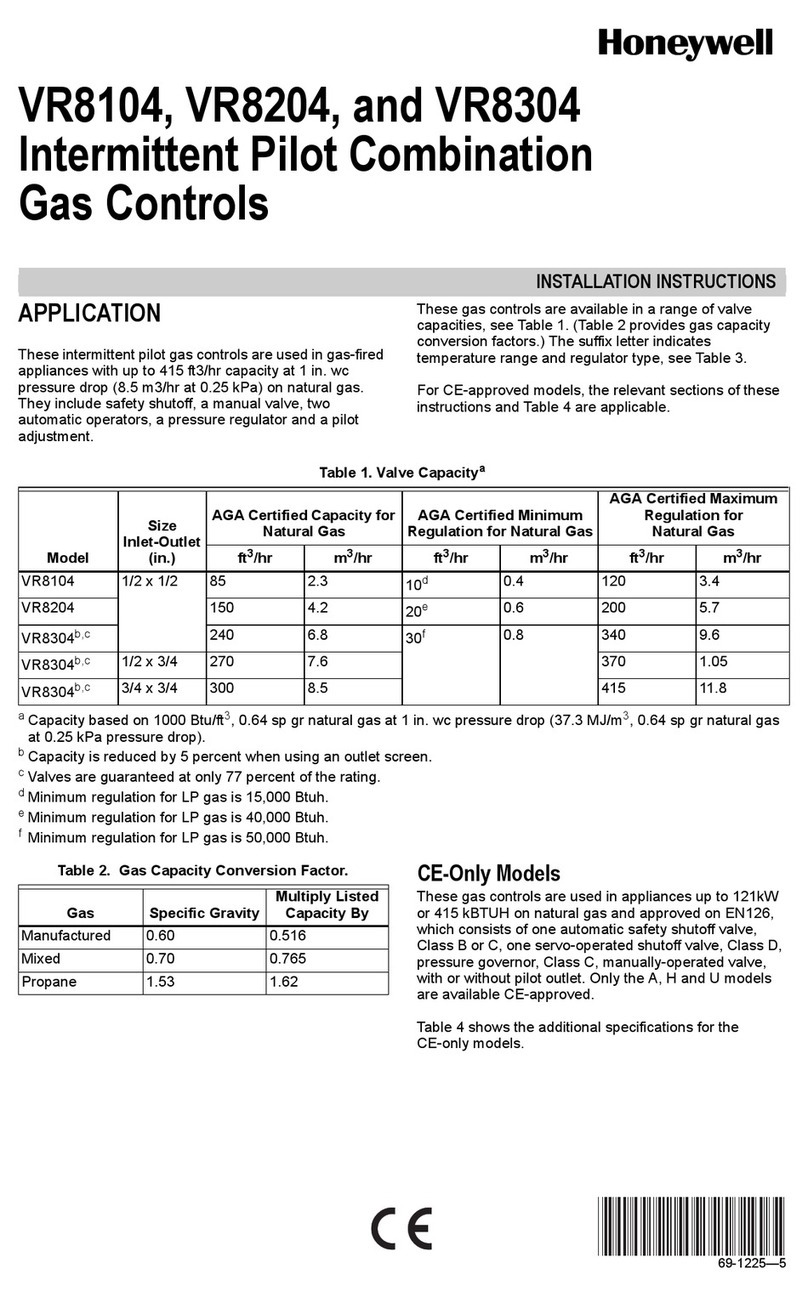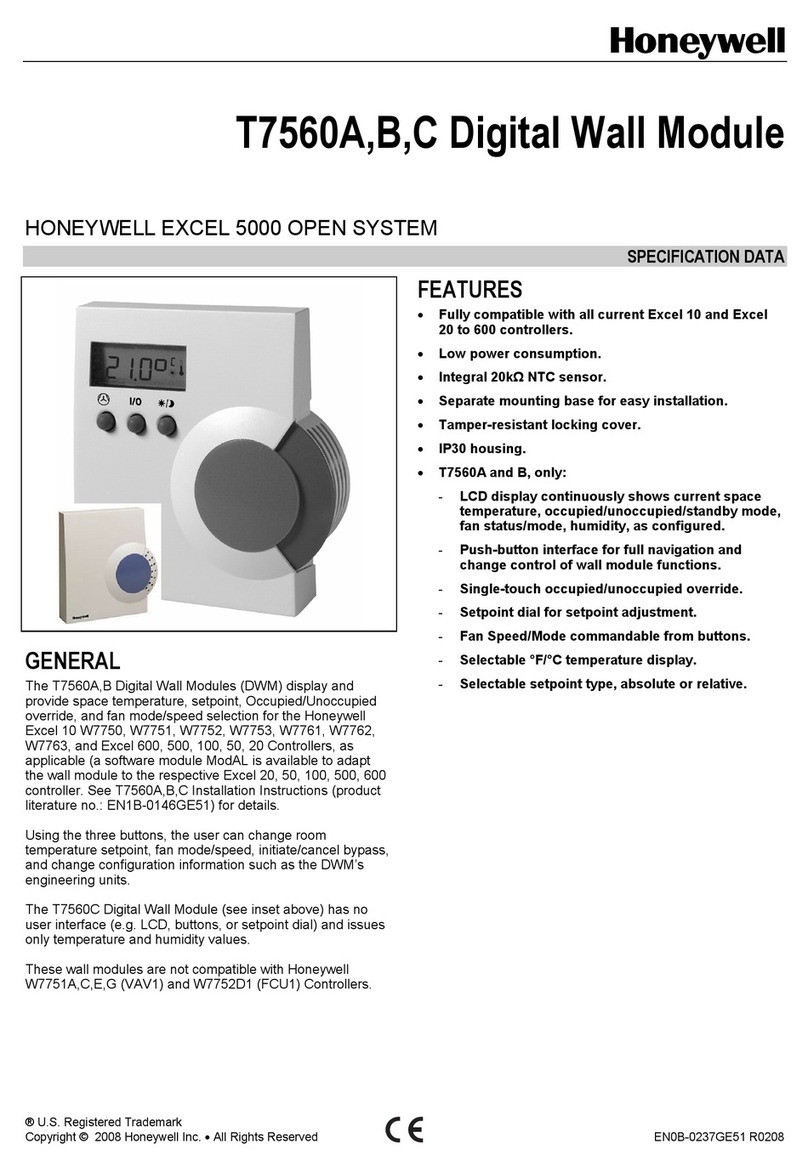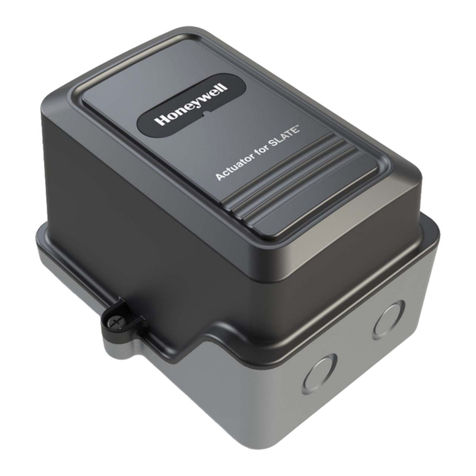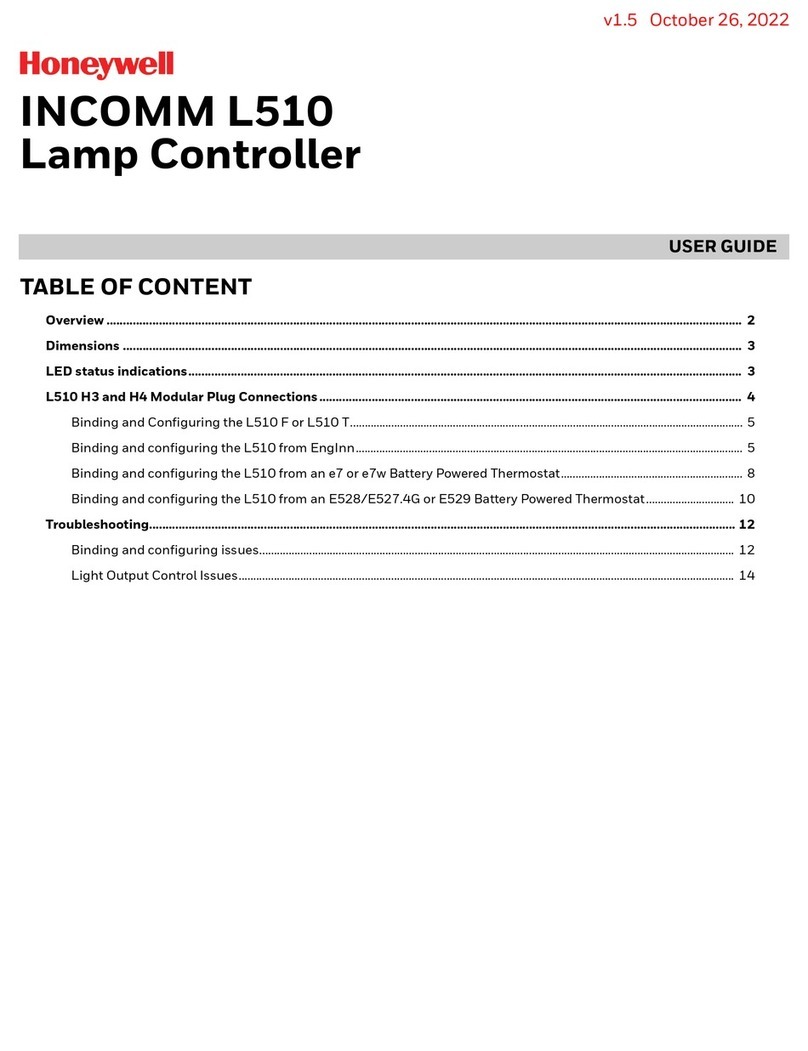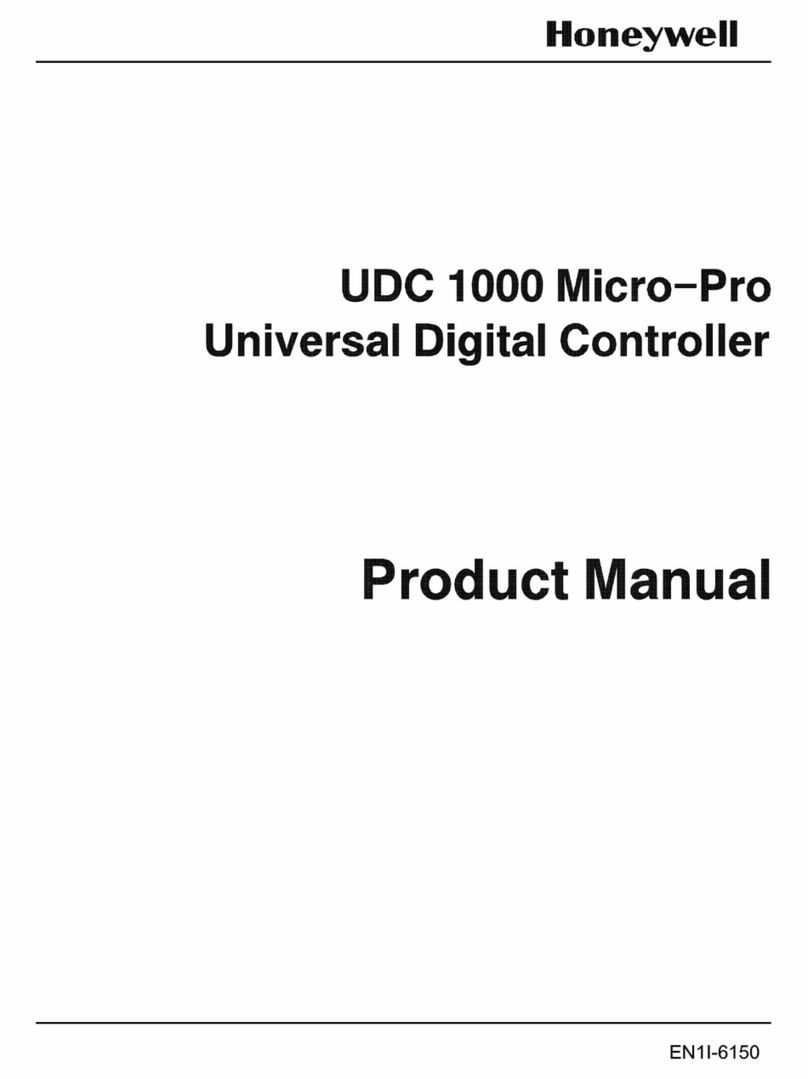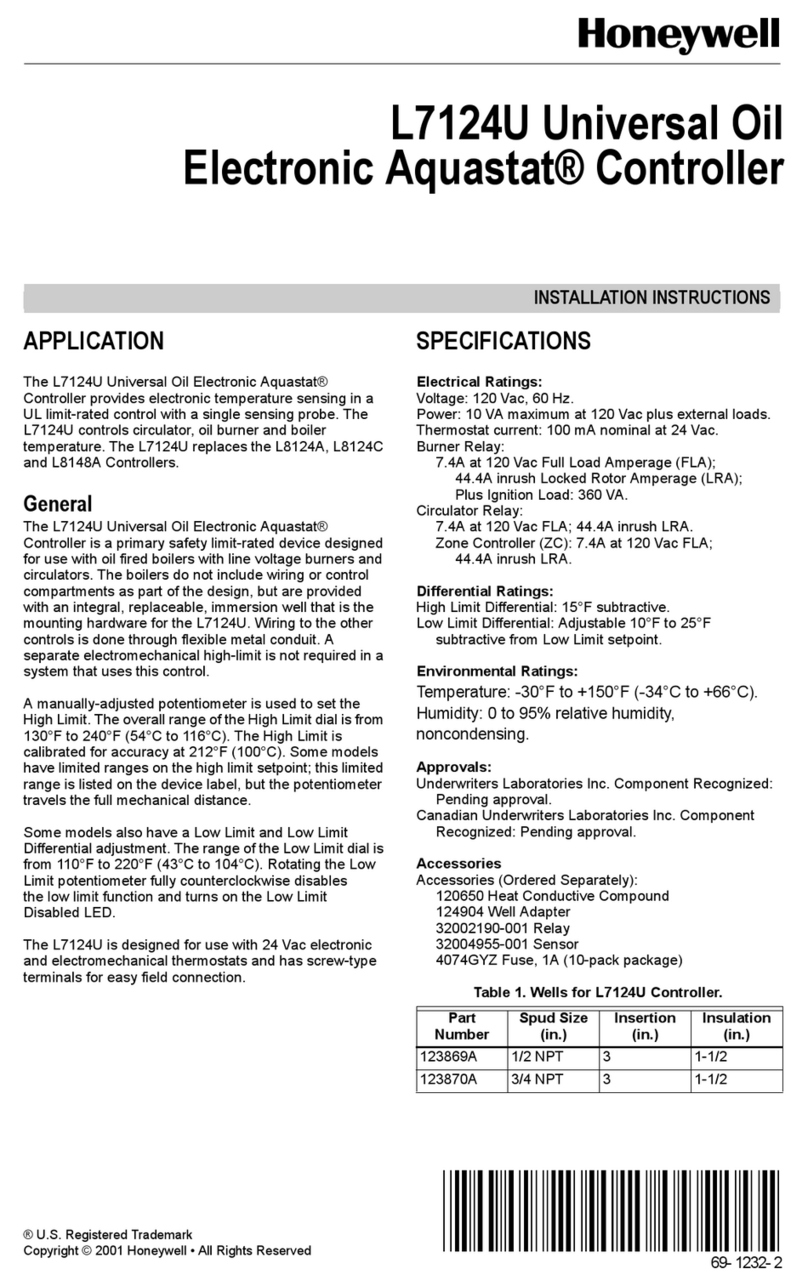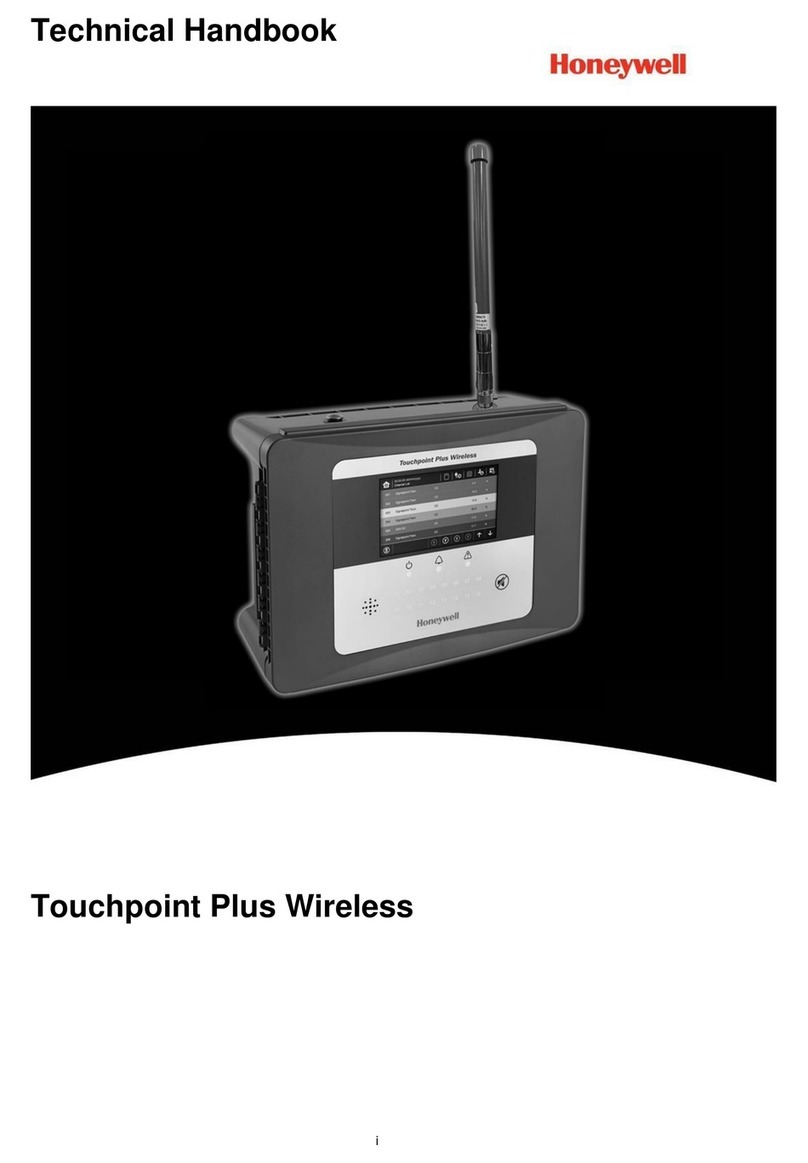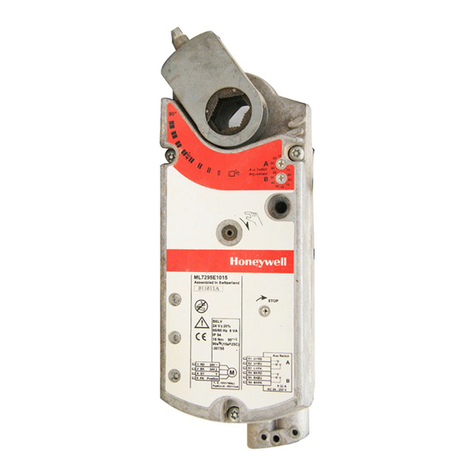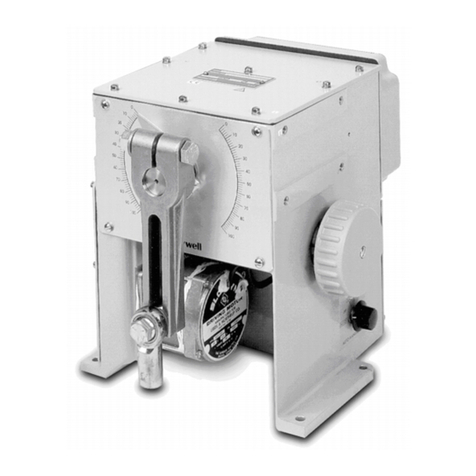
69-2042—01 6 69-2042—01 7 69-2042—01 8 69-2042—01 9
Automation and Control Solutions
Honeywell International Inc.
1985 Douglas Drive North
Golden Valley, MN 55422
Honeywell Limited-Honeywell Limitée
35 Dynamic Drive
Toronto, Ontario M1V 4Z9
customer.honeywell.com
® U.S. Registered Trademark
© 2010 Honeywell International Inc.
69-2042—01 M.S. Rev. 09-10
Printed in U.S.A.
a Flash Code Descriptions:
- Flash Fast: rapid blinking.
- Heartbeat: Constant ½-second bright, ½-second dim cycles.
- 4-second solid on pulse followed by “x” 1-second flashes indicates
flame current to the nearest mA. This is only available in run mode.
- A single flash code number signifies that the LED flashes X times at 2
Hz, remains off for two seconds, and then repeats the sequence.
Table 3. Green LED Status Codes.
Green LED
Flash CodeaIndicates Next System Action Recommended Service Action
OFF No “Call for Heat” Not applicable None
Flash Fast Power up - internal check Not applicable None
Heartbeat Normal startup - ignition
sequence started(including
prepurge)
Not applicable None
4 Seconds ON
then “x” flashes Device in run mode. "x" =
flame current to the nearest
μA.
Not applicable None
2 5 minute Retry Delay
– Pilot flame not detected
during trial for ignition
Initiate new trial for ignition after retry delay
completed. If system fails to light on next trial for ignition check gas supply,
pilot burner, spark and flame sense wiring, flame rod
contaminated or out of position, burner ground connection.
3Recycle
– Flame failed during run Initiate new trial for ignition. Flash code will
remain through the ignition trial until flame is
proved.
Ifsystem failstolightonnexttrialforignition,checkgassupply,
pilot burner, flame sense wiring, contamination of flame rod,
burner ground connection.
4 Flame sensed out of
sequence If situation self corrects within 10 seconds,
control module returns to normal sequence. If
flame out of sequence remains longer than 10
seconds, control will resume normal operation 1
hour after error is corrected.
Checkforpilot flame.Replacegasvalveifpilotflamepresent.If
no pilot flame, cycle “Call for Heat.” If error repeats, replace
control.
5 Damper Error:
– Damper required but not
present
– Damper failed to open
within 60 seconds
– Damper failed to close
within 60 seconds
If damper error corrects, ignition control
resumes normal operation. Checkdamper connection,damperwiring,and24Vconnection
on control.
Replace damper if necessary.
6 Control Internal Error Controlmodule remainsin waitmode. Whenthe
fault corrects,control module resumes normal
operation.
Cycle “Call for Heat.” If error repeats, replace control.
7 Flame rod shorted to ground Control moduleremains inwait mode.When the
fault corrects,control module resumes normal
operation.
Check flame sense lead wire for damage or shorting. Check
thatflamerodisinproperposition.Checkflamerodceramicfor
cracks, damage or tracking.
8 Low secondary voltage
supply Controlmodule remainsin waitmode. Whenthe
fault corrects,control module resumes normal
operation.
Check transformer and AC line for proper input voltage to the
control. Check with full system load on the transformer.
Fig. 5. Measuring flame current with micro-ammeter.
+
–
FLAME
PURGE
PRE
90 SEC
15 SEC
TRIAL
IGNITION
FOR
J1
P1
CURRENT 0 SEC
STATUS
30 SEC
+
–
FLAME
PURGE
PRE
90 SEC
15 SEC
TRIAL
IGNITION
FOR
J1
P1
CURRENT 0 SEC
STATUS
30 SEC
M31283
002.3
DC
µA
FLAME CURRENT MEASUREMENT
Flame current of the device can be meaured using a standard
micro-ammeter by simply inserting the meter probes into the
holes labeled FLAME CURRENT, as shown in Fig. 5.
• Flame current must be measured with pilot valve lit but no
main gas flowing.
• Disconnect MV leadwire from the control before measuring
flame current.
• Set meter to DC μAmp scale.
• Ensure meter leads are positioned correctly [+/-].
NOTE: Trying to measure the pilot flame current in series with
the wiring will not be accurate.
Recommended Minimum Pilot Only Flame Current:
• Must read steady 1 μAmp DC minimum.
• Flame current should be 2 μAmp or greater for reliable
appliance operation.
